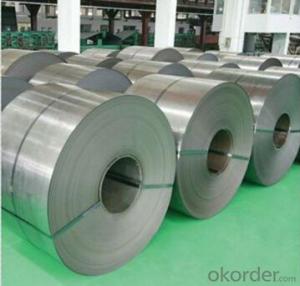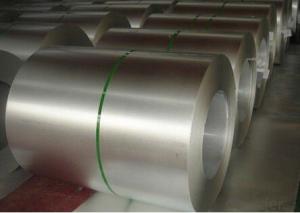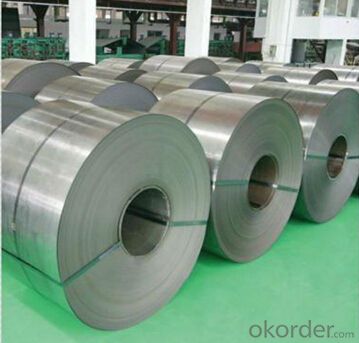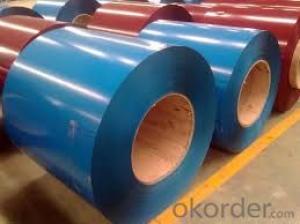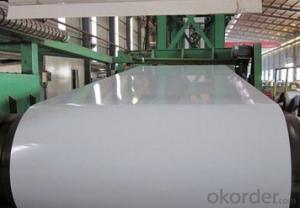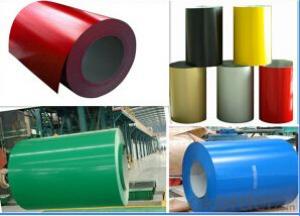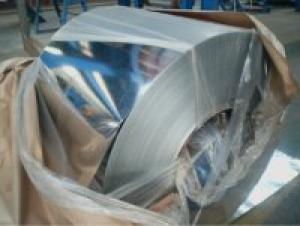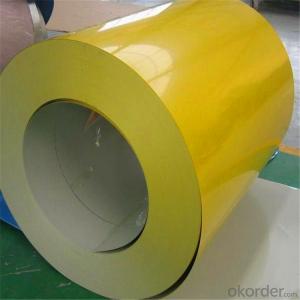Hot Rolled Galvanized Steel Coil (HDGI/GI)
- Loading Port:
- Shanghai
- Payment Terms:
- TT OR LC
- Min Order Qty:
- 25 m.t.
- Supply Capability:
- 10000 m.t./month
OKorder Service Pledge
OKorder Financial Service
You Might Also Like
Hot rolled galvanized steel coil Description:
| Standard: | AISI,ASTM,BS,DIN,GB,JIS | Grade: | SGCC, DX51D+Z, DX52D+Z, DX53D+Z, DX54D+Z, SGH34, etc | Thickness: | 0.14mm-3.0mm |
| Place of Origin: | China (Mainland) | Brand Name: | CNBM | Model Number: | 0.14-3.0mm*600-1500mm |
| Type: | Steel Coil | Technique: | Cold Rolled | Surface Treatment: | Galvanized |
| Application: | Container Plate | Special Use: | Wear Resistant Steel | Width: | 0.14mm-3.0mm |
| Length: | 600mm-1500mm | Zinc Coating:: | 30-275 g/m2 | Chromated or not:: | As Per Requirement |
| Anti-Fingerprint or not:: | As Per Requirement | Oiled or not:: | As Per Requirement | Spangle:: | Zero, Minimum, Regular |
Specifications
Item | Specification |
Commodity Name: | Galvanized Steel Coil (HDGI/GI) |
Thickness(mm): | 0.14mm-3.0mm |
Width(mm): | Above 600mm to 1500mm, negotiable about "below 600mm" |
Zinc Weight: | 30 g/m2 - 275 g/m2 |
Grade: | Mainly Prime, Secondary is also negotiable |
Material: | SGCC, DX51D+Z,DX53D+Z,DX54D+Z,SGH340, etc |
Spangle: | Zero, Minimum, Regular, Big |
FAQ:
Acceptable payment term and way?
T/T,L/C, T/T + L/C, D/P
Acceptable price term
FOB CNF CIF DDU CPT
Do you accept OA payment terms?
Yes, sure, but it normally depending on the order value
Do you have QC team?
Yeah, sure, our QC team is very important, they will keep the qualitycontrol for our products.
What is the validity of your quotation?
Normally 7 days.
What is your advantage?
24 hour quick response /Customer oriented/ Credit foremost/ Top quality Excellent
What is your acceptable payment term?
TT,LC,OA etc
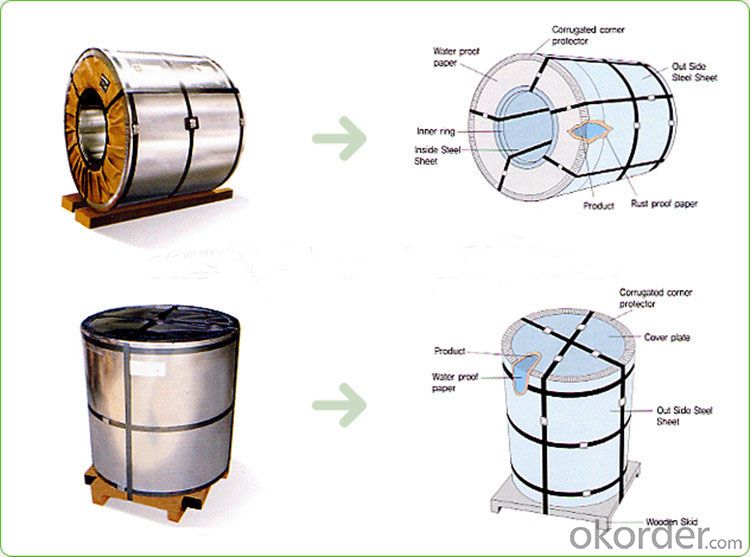
- Q: My remington has a 28 inch barrel and was wondering if it would damage my shotgun to shoot steel out of it?
- I shoot steel out of my 870 express all the time.
- Q: how many persent of manganese in all types of carbon steel
- i think it is 1.65%...
- Q: What are the common applications of steel coils in construction?
- Steel coils are commonly used in construction for various applications such as structural components, including beams, columns, and trusses. They are also used for roofing and cladding systems, as well as in the fabrication of reinforcing bars and precast concrete elements. Additionally, steel coils are utilized in the manufacturing of pipes, tubes, and sheet metal products, serving as a crucial material in the construction industry.
- Q: What are the common methods of recoiling steel coils?
- Manufacturers and customers have various options when it comes to recoiling steel coils. One frequently used method is slitting, which employs rotating circular blades to cut a wide steel coil into narrower strips. This results in multiple smaller coils with desired widths. Slitting is commonly employed to create coils of different sizes for diverse applications. Another technique is known as cut-to-length (CTL) recoiling, where the steel coil is cut into specific lengths according to the customer's requirements. This involves passing the coil through a straightening and leveling machine, followed by a flying shear that cuts the steel into the desired lengths. CTL recoiling is particularly useful in industries that demand precise and uniform steel lengths, such as construction or automotive. Furthermore, there is a method called coil-to-coil recoiling. This process involves rewinding the steel coil onto a new coil with the desired dimensions and properties. Coil-to-coil recoiling is typically utilized when the original coil needs resizing, reconditioning, or rerolling for further processing or transportation purposes. Specialized recoiling machines ensure proper tension, alignment, and winding of the steel coil onto the new coil. In conclusion, the recoiling of steel coils can be accomplished through various methods, including slitting, cut-to-length recoiling, and coil-to-coil recoiling. Each method offers its own advantages and is chosen based on factors such as required coil dimensions, precision, efficiency, and the specific needs of the industry or customer.
- Q: How are steel coils cut into smaller sizes?
- Steel coils are cut into smaller sizes using a machine called a slitting line. This machine employs a set of circular blades that cut through the steel coil, creating narrower strips or sheets of the desired size. The slitting line can adjust the width of the cuts and can also remove any rough edges or burrs.
- Q: What are the safety standards for steel coil manufacturing?
- The safety standards for steel coil manufacturing are designed to ensure the well-being and protection of workers, as well as the quality and reliability of the products produced. These standards encompass various aspects of the manufacturing process and cover both general safety guidelines and industry-specific requirements. One of the main safety standards for steel coil manufacturing is the implementation of proper machinery and equipment safeguards. This includes ensuring that all machinery and equipment used in the manufacturing process are properly maintained, regularly inspected, and equipped with safety features such as emergency stop buttons and safety guards. Workers should also receive adequate training on the safe operation of these machines and be aware of potential hazards. Another important safety standard is the use of personal protective equipment (PPE). Workers involved in steel coil manufacturing should be provided with appropriate PPE, such as safety goggles, gloves, ear protection, and protective clothing, to protect them from potential hazards such as flying sparks, noise, and chemical exposure. Additionally, safety standards for steel coil manufacturing emphasize proper handling and storage of materials. This includes guidelines on how to safely lift and transport heavy steel coils, as well as rules for stacking and storing them to prevent accidents and injuries. Fire safety is also a crucial aspect of the safety standards for steel coil manufacturing. Measures should be in place to prevent and control fires, including regular inspections of electrical systems, proper storage and handling of flammable materials, and the presence of fire extinguishers and emergency evacuation plans. Furthermore, safety standards require regular safety training and awareness programs for all employees involved in steel coil manufacturing. This ensures that workers are well-informed about potential hazards, safety procedures, and emergency protocols. Regular safety audits and inspections are also conducted to assess compliance with these standards and identify areas for improvement. Overall, the safety standards for steel coil manufacturing aim to create a safe working environment, reduce the risk of accidents and injuries, and ensure the production of high-quality steel coils. Compliance with these standards is essential for maintaining the well-being of workers, protecting the environment, and maintaining the reputation of the manufacturing industry.
- Q: How are steel coils used in the production of steel framing systems?
- Steel coils are used in the production of steel framing systems as they are the primary raw material. These coils are unwound and fed into a roll forming machine, where they are shaped into the desired profiles and lengths. The steel framing systems, including studs, tracks, and joists, are then fabricated from these formed coils, providing structural support and stability to buildings and structures.
- Q: How do steel coils affect the quality of finished products?
- Steel coils can have a significant impact on the quality of finished products. Their quality, including dimensions, surface condition, and mechanical properties, directly affects the final product's strength, durability, and appearance. Coils with inconsistent dimensions or surface defects can lead to uneven or weak finished products. Similarly, if the mechanical properties of the coils do not meet the required specifications, it can compromise the performance and functionality of the end product. Therefore, ensuring the high quality of steel coils is crucial for achieving superior finished product quality.
- Q: Hi, I have ranch style home. I would like to remove a barring wall, And leave it open it will become a 18' foot 7 inch opening , and I'm interested in installing a steel beam so that i may remove the barring wall that supporting the ceiling and rafters. My house is about 57' feet long 28' feet 7 inch wide and it is 13' feet high from the floor to the top of the roof ridge. I heard there is aluminum beams but I never heard of that, I've only heard of steel beams. I don't want to use wood. I would also like to now how much longer do i need the beam to be the opening would be 18'7 plus the extra that i would need to put on the block wall to hold the beam up, do I make it 2' feet bigger so i can have a foot on each side that would sit on a block wall. or do i need more then that.THanks for your help
- My okorder for help
- Q: How are steel coils used in the production of solar panels?
- Steel coils are not directly used in the production of solar panels. However, steel may be used as a component in the structural framework or mounting systems of solar panels to provide stability and support.
Send your message to us
Hot Rolled Galvanized Steel Coil (HDGI/GI)
- Loading Port:
- Shanghai
- Payment Terms:
- TT OR LC
- Min Order Qty:
- 25 m.t.
- Supply Capability:
- 10000 m.t./month
OKorder Service Pledge
OKorder Financial Service
Similar products
Hot products
Hot Searches
Related keywords
